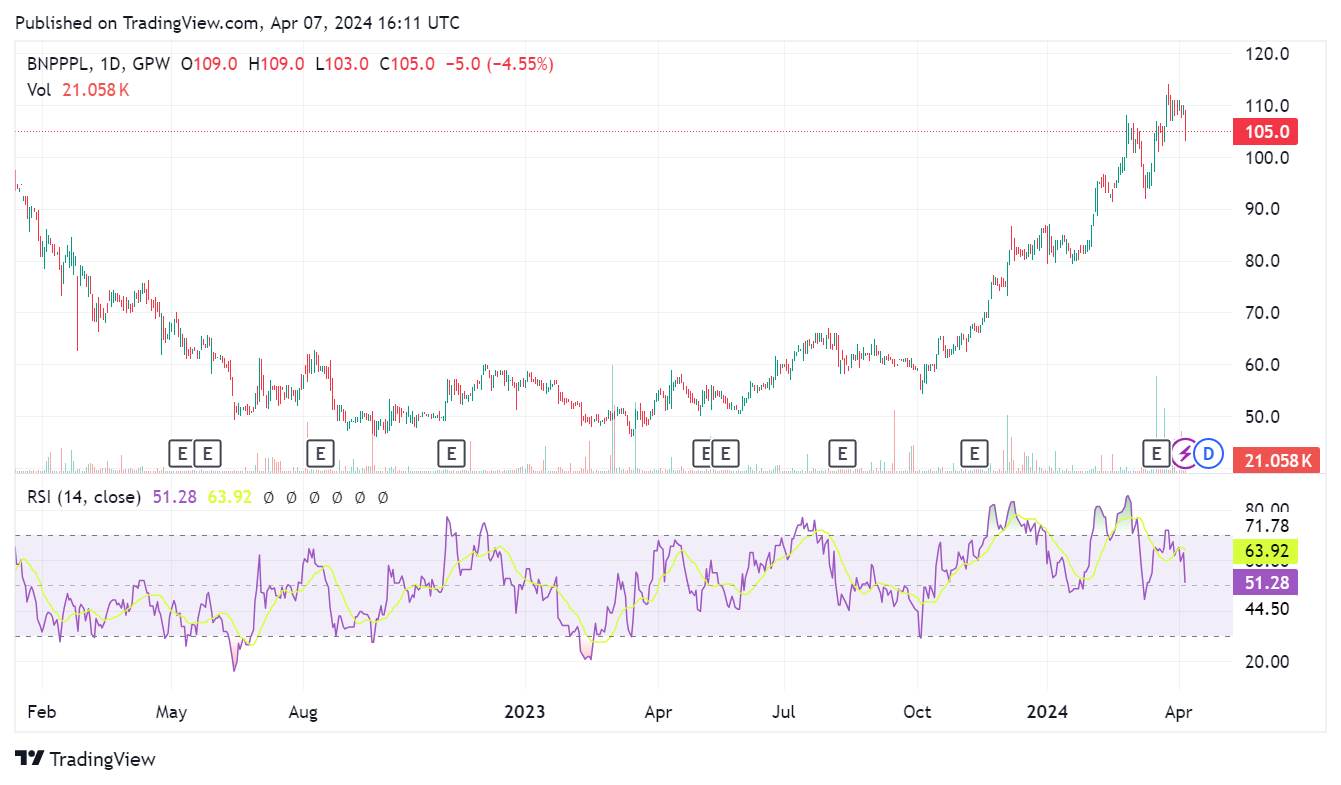Fundamental analysis
BNP Paribas Bank Polska was established in 1975 under the name of Bank Gospodarki Żywnościowej (BGŻ), but its history dates back to 1915. The company was listed on the Warsaw Stock Exchange in 1994. As part of the consolidation of the banking market in Poland, the bank gradually merged with other banks, including a branch of the French multinational banking complex BNP Pariba, from which it took its name. BNP Paribas Bank Polska is, however, a separate company still traded on the Warsaw Stock Exchange.
Historically, Polish banks provided a large number of mortgages in Swiss franc (CHF), which offered much lower interest rates than those in the domestic zloty. When the franc appreciated massively, however, many clients’ repayments skyrocketed, leading to delays in mortgage repayments and subsequent lawsuits between Polish banks and their clients. However, most of the disputes were won by the clients, which to this day has resulted in additional debt servicing costs and other legal expenses for the banks that provided most of these mortgages. BNP itself estimates that CHF mortgages cost it around PLN 2 billion in 2023.
BNP Pariba Bank Polska is not one of the largest banks in Poland, but its income is stable.
ROE is around 13%.
Turnover has been growing steadily since 2019, with the bank reporting net income of PLN 7.28bn for 2023 (+36% y/y).
Results
Current consumer sentiment in Poland’s service sector is improving. This can be seen in the ESI for March, where we are close to 0 (currently -0.8), which is close to bridging into positive sentiment. (In August 2023, the reading was -5.2.) With interest rates falling, the volume of new mortgages is also rising.
Technical analysis
The stock is currently in an uptrend, which is confirmed by the moving averages.
The RSI is in the neutral zone almost in the middle of its range.
The stock is above the price of 100 zloty apiece, this price can now act as a decent support.
Conclusion
Polish stocks may look like a revelation from Eastern Europe for many investors. However, the opposite is now true. Although Poland is one of the Emerging Markets, the current valuation of the stock is at lower levels than that of US stocks. So the yield should be higher. At the same time, investing in Poland (and other European countries) can bring a spread of risk across multiple countries. BNP Paribas Bank Polska is a solid bank with a good portfolio, above-average ROE, and a solid background. However, its price has already climbed solidly since the last forecasts, so it is questionable whether this trend will continue. The CHF mortgage problem is still there.
Sources
https://www.erstegroup.com/en/research/report/en/SR361052
https://economy-finance.ec.europa.eu/document/download/d503cdce-b7fa-4a7b-a4f4-efe6a576cdfc_en?filename=bcs_2024_03_statistical_annex_en.pdf
https://www.bnpparibas.pl/_fileserver/item/1544162
https://www.google.com/finance/quote/BNP:WSE?hl=en&window=MAX&comparison=
https://en.wikipedia.org/wiki/BNP_Paribas_Bank_Polska
https://www.spglobal.com/marketintelligence/en/news-insights/latest-news-headlines/polish-banks-swiss-franc-mortgage-pressure-set-to-ease-in-2024-80080301
https://www.tradingview.com/chart/?symbol=GPW%3ABNP
BNP Paribas Bank Polska SA (WSE: BNP)

08
Apr